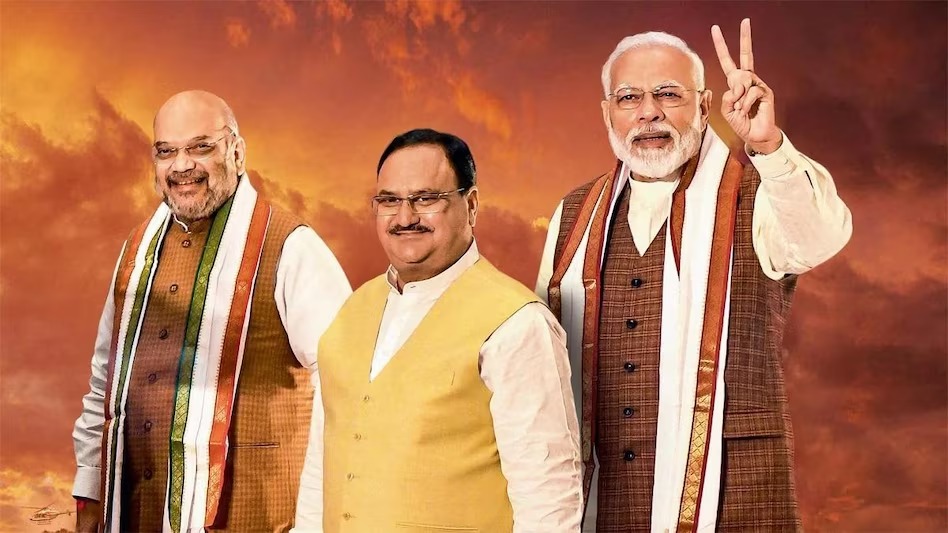Opinion polls can go wrong and the elections are more than a month away in some places; that is a long time in politics and much can change.
The 2024 Lok Sabha elections will be a crucial one: a sentinel event
V.S. Naipaul, the Trinidadian Nobel Laureate of Indian origin astutely identified the purposelessness that prevailed in early independent India when he visited the country in the 1960s. In his book, India- A Wounded Civilization he writes: The loss of the past meant the loss of that civilisation, the loss of a fundamental idea of India, and the loss therefore to a nationalist-minded man, of a motive for action. It was a part of the feeling of purposelessness of which many Indians spoke.”
While a small number of Indians were slowly rediscovering their true identity in the latter part of the twentieth century, 2014 proved to be an inflection point. The election of Modi and the clear majority given to the BJP signalled a change. The last 10 years of the BJP’s rule more than its previous tenures (1998-1999; 1999-2004) has infused India with a new vigour. The “idea of India” is being reformed in the image of its ancient civilization that revered enlightenment, pluralism and acceptance of different faiths, quite distinct from the predatory alien influences that overran India in the last millennium and forcibly tried to impose the dominance of one religion over the majority Hindus. These 10 years have given Indians a new sense of identity. It has given Indians a sense of purpose that is driving them to achieve greater economic success. And it has made India carve out a place for itself on the world stage.
Today, India with a GDP of $3.7 trillion is the fifth largest economy in the world and is expected in 3 years to become the third largest, behind only the United States and China. While this is a remarkable achievement, we cannot forget that large sections of our population still live at poverty levels. We must be conscious of our success but not arrogant; a quiet confidence tempered by a humility that makes us aware of the challenges that we still face in lifting all our citizens out of poverty and illiteracy.
It was precisely this lopsided election campaign of “India Shining” that resulted in the debacle of 2004—an election that the BJP was supposed to win but lost. The “India Shining” campaign that targeted the urban population was an ill-conceived, overconfident, hyped-up exercise that failed to understand the ground reality or connect with the vast masses of India.
The ghost of 2004 must be resurrected to keep the BJP and its supporters grounded. They cannot afford to make the same mistake again.
Opinion polls are galore about how Modi and the BJP will be returned to power a third time with an unprecedent seat tally of close to 400 for the NDA. The political strategist Prashant Kishor has even predicted that the BJP would make significant gains in the south and east.
However, opinion polls can go wrong and the elections are more than a month away in some places; that is a long time in politics and much can change.
India’s vast diversity makes it difficult for one party to decisively establish its dominance across the length and breadth of India. No political party including the Congress in its heydays has been able to garner more than 50% of the popular vote. In the 2019 elections, the BJP polled 37.7% of the votes and secured 303 seats. The Congress Party came in second with 19.6% of the votes and 52 seats. A small swing in the popular vote can result in a disproportionate loss or gain of parliamentary seats.
And this swing can be affected by multiple dynamic last-minute factors that are constantly in flux.
As per the CSDS (Centre for the Study of Developing Societies) 25% to 30% of voters decide whom to vote for on the very day of voting or just a couple of days before polls. The Axis My India 2019 exit poll, puts this number even higher at 43%. It pays to be cautious.
In 2019 the voter turnout was 67.4% (with 91.2 crore registered voters) up from 66.44% in 2014. In 2024 there are almost 5 crore more voters (96.88 crores) and how these new voters will vote is uncertain.
The number of women voters has also been increasing over the years and in 2019, 48.08% of the votes cast were by women. Also, in 2019 for the first time the percentage of women voters registered was higher than that of men (67.18 vs 67.01)
The discrepancy between urban and rural voters may play a role: in 2019, rural areas recorded a 68% turnout, and urban areas had 60%. More or less on either side can tip the balance.
These changing demographics and voting patterns are pivotal to the final outcome.
Finally on D-day, the climate may play a spoiler. Rain or intense heat may deter people from casting their votes.
All in all, the BJP cannot be complacent. The cadre must sink any differences that they may have at the local level and come together to work relentlessly for the BJP to win. For at stake is not just the destiny of one-man or one party. It is the future of a country and an ancient civilization and the principles of pluralism and tolerance that have defined it.

